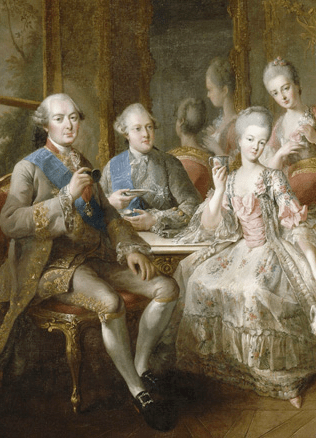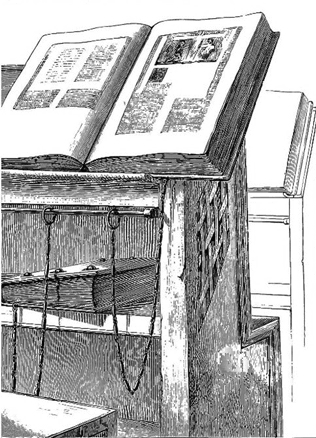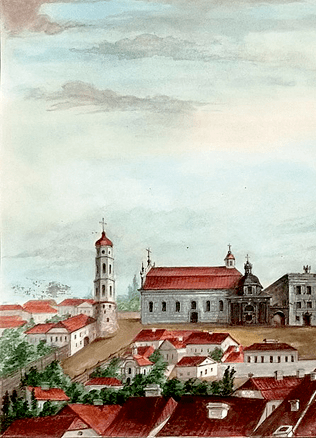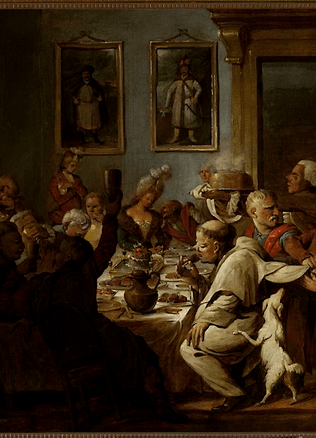The War era coins – tymfs
During the years of John Casimir’s reign (1648–1668), not only copper coins but also coins of a new face value – złoty were minted for the first time. Prior to that time złoty was only a counting unit equal to 30 grosz. In the middle of the 17th century the wars with Sweden and Moscow were fought therefore it was necessary to have money to settle accounts with the mercenary army. It was decided to mint copper coins – shillings. Though it helped, the Treasury of the State was still short of money. The coin expert from Rostock (Mecklenburg, Germany) Andreas Timpe offered to resolve this problem. Around 1650 he arrived in Poland and became a lessee of the mints of Poznan and Wrocław, and from 1657 – of the mint of Opole. From 1 October 1661 he became a lessee of the major mint of Poland in Krakow. Hence, Andreas Timpe was an influential person in Poland. He proposed to mint silver coins złoty that had no full value. The mass of the coins had to be of 6.73 grams and the hallmark was 500. According to the quantity of silver, their real values was only 12 grosz.
“The desire to save the motherland exceeds the price of metal”
The initiator of the copper coins Italian Titus Livius Boratini opposed the project. He stated that it was bad to mint copper coins, but it was even worse to mint silver coins of the forced exchange rate. According to the expert, such coins would make the value of genuine silver and gold coins more expensive and would make trade with the foreign state more difficult. The Sejm Commission, however, ignored his opinion. Andreas Timpe was allowed to mint silver coins of little value.
The contract with Andreas Timpe was signed on 4 March 1663. He had to mint złoty units for the value of 6 million. The funds that got into the Treasury had to be used to settle accounts with the mercenary army. He was not allowed to establish a mint in the territory of the Grand Duchy of Lithuania therefore in 1663 Andreas Timpe, together with his brother Thomas, rented the mint in Lviv and from 3 April to 19 September minted the first złoty units whose value totalled 1,35 million. From the 1st of October manufacture of these coins was transferred to the mints of Bydgoszsz and Krakow. Manufacture of coins lasted until 1666. All in all, złoty coins worth about 7.5 million were coined.
The averse of this money bore the King’s monogram –– ICR and the following legend was inscribed – DAT PRETIVM SERVATA SALVS POTIORQ METALLO EST (The desire to save the Motherland exceeds the price of metal). The emblem of the Polish-Lithuanian Commonwealth and the denomination ХХХ were indicated on the reverse.
Very soon the appearance of these coins, like that of copper ones, caused a great dissatisfaction.
Coin manufacturers were accused of swindling and appropriating the money.
In December 1666, the Sejm of Warsaw demanded that Titus Livius Boratini and Andreas Timpe should be taken to court. The latter was 4 million złoty in debt to the treasury, but he fled to Germany.
In 1676 the tymfs of a forced exchange rate were officially devalued and equated to the Ortam (18 grosz). However, their real value was smaller therefore they received the name of the “ortam tymf.”
Return of the tymfs in the 18th century
When the Polish-Lithuanian Commonwealth was ruled by Augustus III (1733–1763) the new tymf coins were minted in Leipzig (Saxony) in 1752–1756. These coins were 6,7 grams in mass and had 437.5 silver hallmark. The coins contained 2.95 grams of silver. The letter T showing the denomination of these coins was represented under the emblem of the Polish-Lithuanian Commonwealth on the reverse of the new tymfs. Simultaneously Ortam coins of the same mass, hallmark and design were minted. The difference between the coins was that instead of the letter T, there was number 18 – the Ortam. In 1763, the tymfs were coined by the mint of the city of Elbing.
Do You Know?
In the 17th century the wars with Sweden and Moscow emptied the Treasury of the State. It was tried to save the Treasury by minting silver coins of the forced exchange rate that did not have a full value – the tymfs. The averse bore the following legend: DAT PRETIVM SERVATA SALVS POTIORQ METALLO EST (The desire to save the Motherland exceeds the price of metal).
Alongside these coins in 1707-1709, czar Peter I of Russia minted coins of the Polish tymf sample in Moscow. The picture of Peter I was represented on the averse of these coins and there was the two-headed eagle of Russia on the reverse, but the denomination was not indicated. The mass of these coins (6 grams), however, and their hallmark (about 500) and the diameter (28.5 mm) coincided with those of the Polish tymf. The coins were meant for the Russian army, which was in the territory of the Grand Duchy of Lithuania during the years of the Northern War. The official exchange rate was 12 koppeks or 18 grosz. The real course, however, was lower. In 1717, the value of the tymf in the Polish-Lithuanian Commonwealth was 38 copper grosz, whereas the Russian tymf was worth only 30 grosz.
The reduced value should not be surprising because the coins were intended for the circulation of money of a foreign country rather than that of Russia.
This tradition of minting money, against the background of the wars, in the 17th–18th centuries was quite frequent. Though these coins were meant for the circulation in the GDL, today only one coin found in Lithuania and only three coins found in the territory of Belarus are known. The Russian tymfs were not popular with the local population, and after the war their circulation was forbidden. The fact that the number of coins minted was small interfered with their distribution. Though no exact data about the size of the emission of the money have survived, it is thought that about 1.5 million coins could have been minted in Moscow.
Eduardas Remecas



